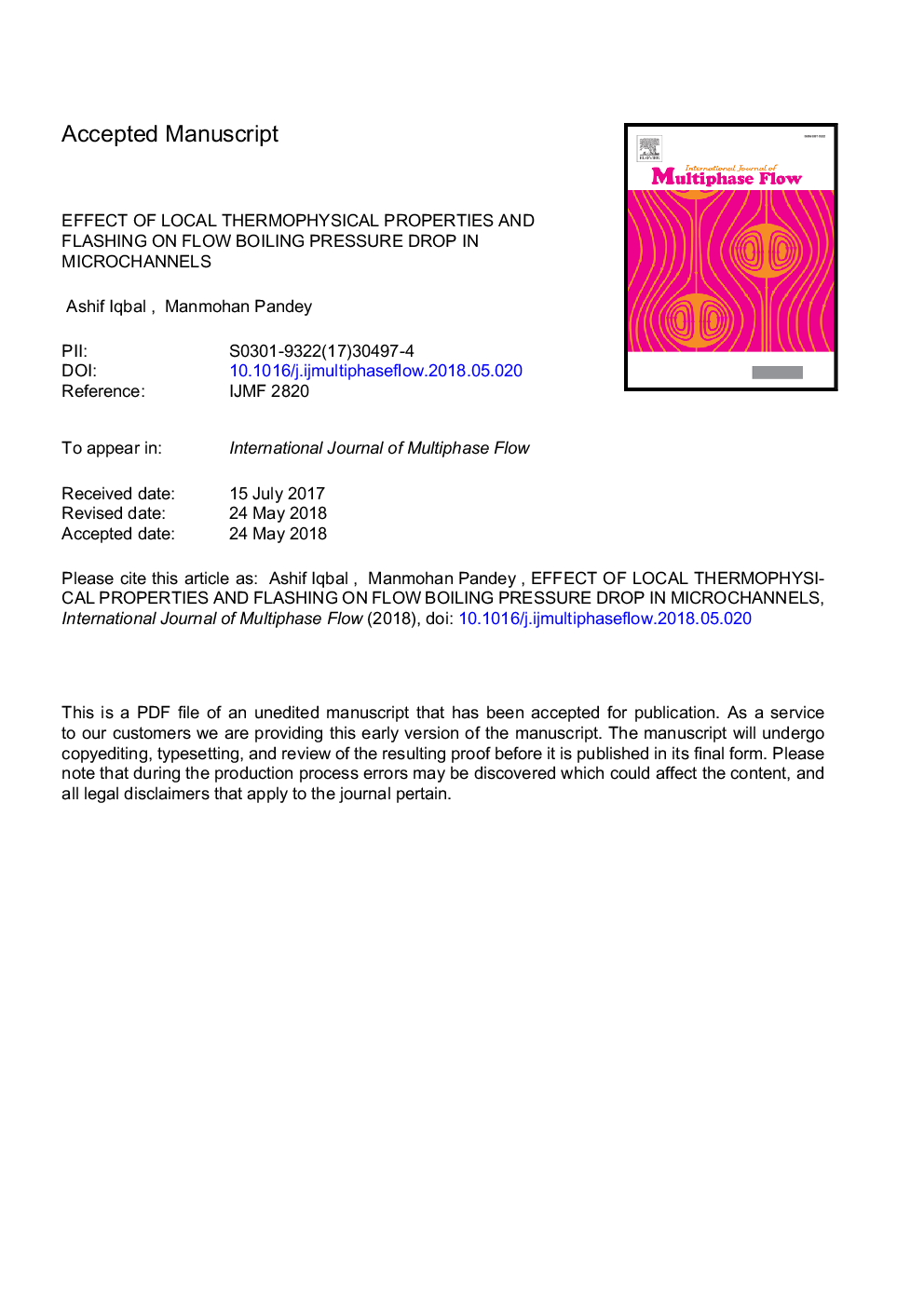| Article ID | Journal | Published Year | Pages | File Type |
|---|---|---|---|---|
| 7060062 | International Journal of Multiphase Flow | 2018 | 29 Pages |
Abstract
Pressure drop in microchannels can be considerably high, which can cause significant changes in thermophysical properties. Thus, the existing pressure drop modelling approach for flow boiling in microchannels, which neglects the effects of property gradients and flashing, suffers from large errors in case of high pressure drop. To mitigate this, a new modelling approach has been developed for comprehensive evaluation of pressure drop along a microchannel with flow boiling. It is based on the separated flow model, incorporating the evaluation of thermophysical properties at local pressure, the effect of flashing on thermodynamic quality, and the effect of heat flux on the two-phase multiplier. Relations based on the Clausius-Clapeyron Equation were employed for evaluation of local thermophysical properties. This approach was applied along with different empirical correlations from the literature to predict flow boiling pressure drop. Experiments were conducted on flow boiling of DI water in a single microchannel of hydraulic diameter 111â¯Âµm, with mass fluxes of 205-410â¯kg/ m2s and heat fluxes of 7.5-19.5â¯W/cm2, and the pressure drop recorded was 10-36â¯kPa. It was found that the new modelling approach improves the accuracy of pressure drop predictions significantly in case of high pressure drop.
Related Topics
Physical Sciences and Engineering
Chemical Engineering
Fluid Flow and Transfer Processes
Authors
Ashif Iqbal, Manmohan Pandey,
